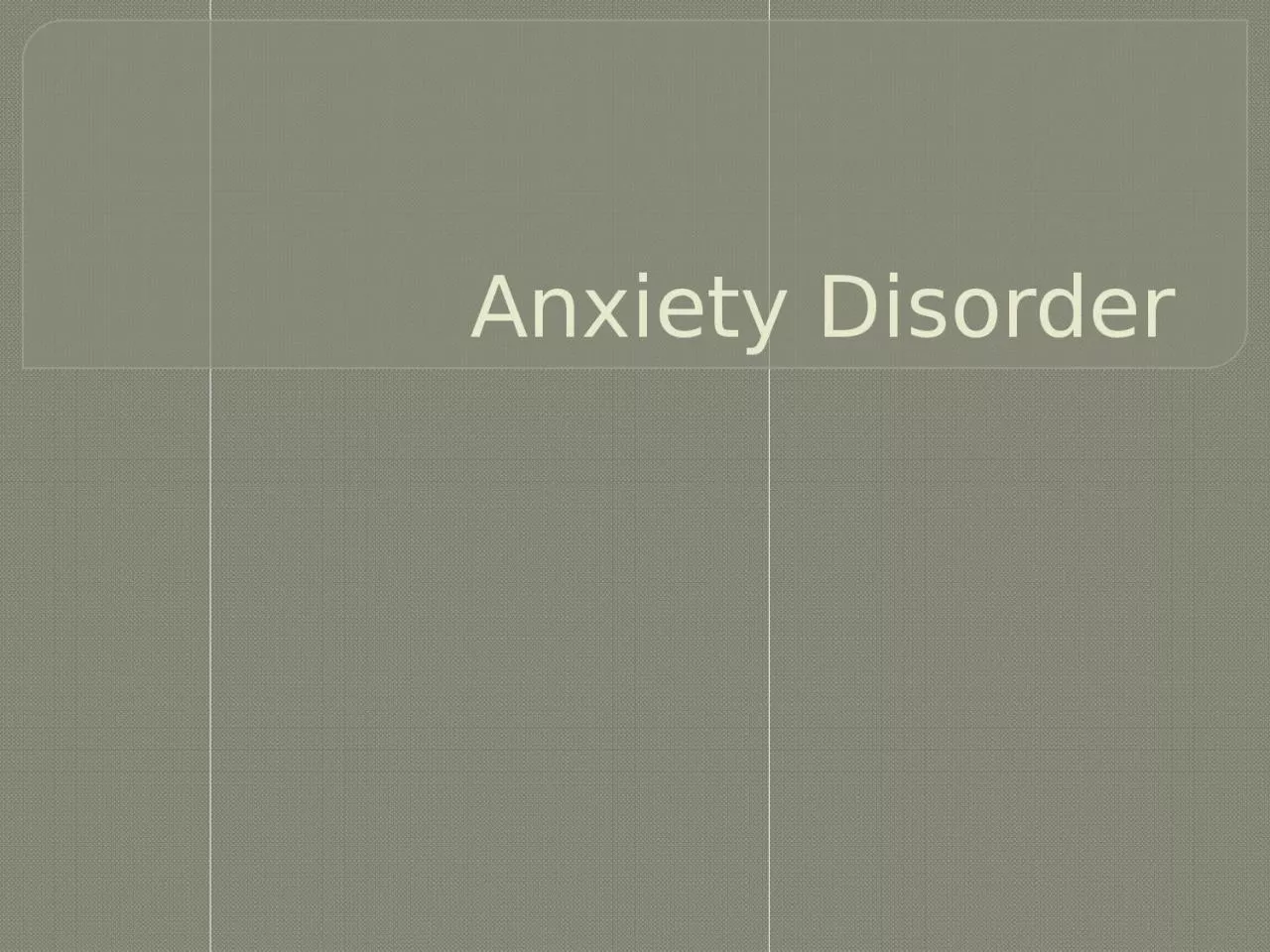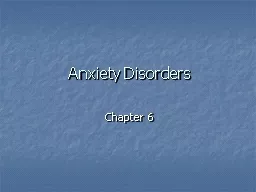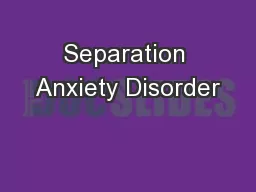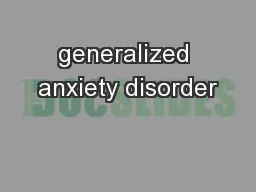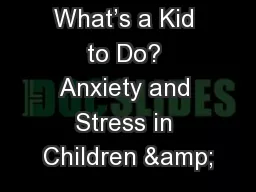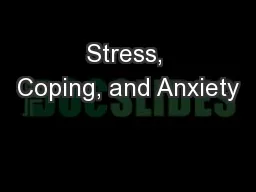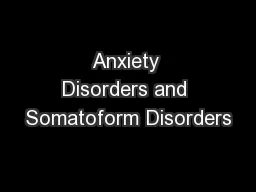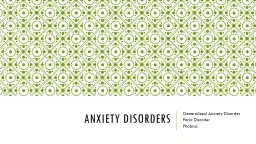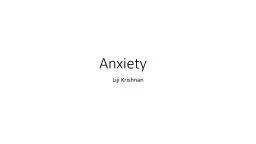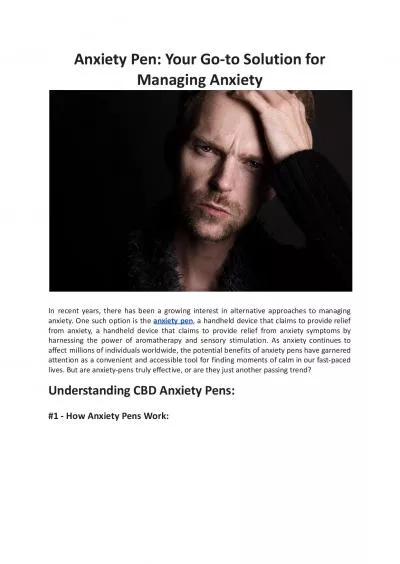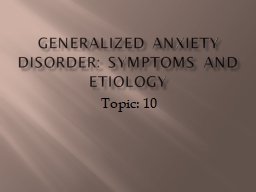PPT-Anxiety Disorder Definition and Symptoms
Author : christina | Published Date : 2023-05-21
The term anxiety is defined as diffused vague and very unpleasant feeling sense of fear and apprehension about possible dangers Symptoms of anxiety are nervousness
Presentation Embed Code
Download Presentation
Download Presentation The PPT/PDF document "Anxiety Disorder Definition and Symptoms" is the property of its rightful owner. Permission is granted to download and print the materials on this website for personal, non-commercial use only, and to display it on your personal computer provided you do not modify the materials and that you retain all copyright notices contained in the materials. By downloading content from our website, you accept the terms of this agreement.
Anxiety Disorder Definition and Symptoms: Transcript
Download Rules Of Document
"Anxiety Disorder Definition and Symptoms"The content belongs to its owner. You may download and print it for personal use, without modification, and keep all copyright notices. By downloading, you agree to these terms.
Related Documents

